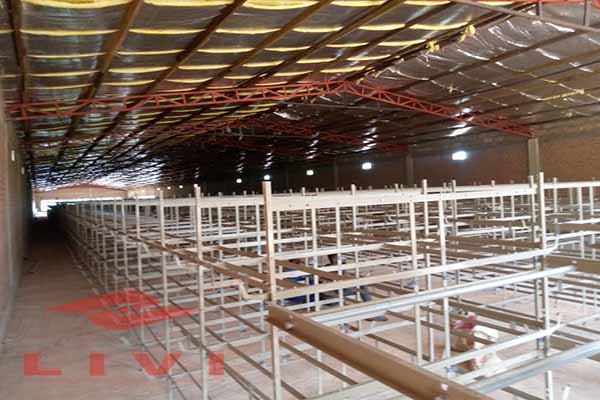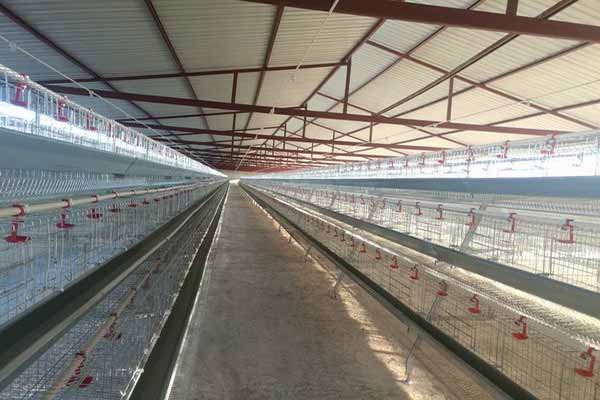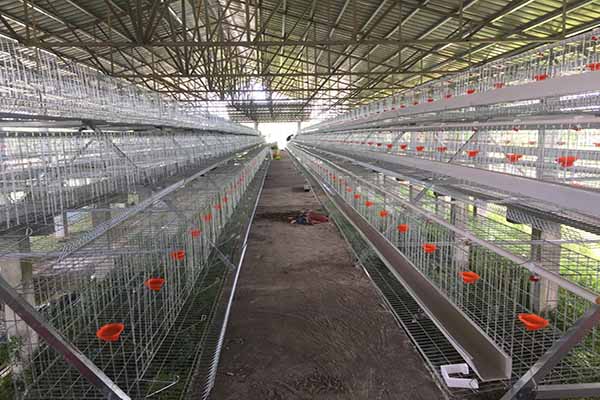Automated Equipment Loan Plan for Chicken Farms in Uganda: Enhancing Efficiency and Sustainability
Time : 2025-06-25
Chicken farming is a vital industry in Uganda, contributing significantly to the country’s economy and food security. As the demand for poultry products continues to rise, the need for modern, automated equipment has become increasingly important. To support the growth and sustainability of chicken farms, an automated equipment loan plan has been introduced. This article delves into the details of this plan, providing insights into its benefits, implementation, and the role of modern equipment in chicken farming.

The Importance of Automated Equipment in Chicken Farming
Automated equipment has revolutionized the poultry industry, offering numerous advantages over traditional methods. These benefits include improved efficiency, reduced labor costs, enhanced biosecurity, and increased productivity. Here’s a closer look at how automated equipment can transform chicken farming in Uganda:
1. Enhanced Efficiency
Automated systems streamline various processes, from feeding and watering to health monitoring and egg collection. This not only saves time but also reduces the risk of human error, leading to more consistent and reliable outcomes.
2. Reduced Labor Costs
Automated systems can significantly reduce the need for manual labor, thus lowering labor costs for chicken farms. This is particularly beneficial for small-scale farmers who may struggle to afford the high costs of employing a large workforce.
3. Enhanced Biosecurity
Automated systems help maintain a cleaner and healthier environment for chickens, reducing the risk of disease outbreaks. This is crucial in an industry where biosecurity is a top priority.
4. Increased Productivity
With automated systems, chicken farms can achieve higher production rates without compromising on the quality of the poultry products. This increased productivity can lead to higher profits and improved competitiveness in the market.
The Automated Equipment Loan Plan for Chicken Farms in Uganda
Recognizing the importance of modern equipment in the poultry industry, the government of Uganda has introduced an automated equipment loan plan. This plan aims to provide financial assistance to chicken farmers, enabling them to acquire the necessary equipment to enhance their operations. Below are the key aspects of this plan:
1. Eligibility Criteria
The loan plan is open to all chicken farmers in Uganda, regardless of their size or location. How ever, certain eligibility criteria must be met, including having a valid business registration and a clear business plan.
ever, certain eligibility criteria must be met, including having a valid business registration and a clear business plan.
2. Loan Amount and Terms
The loan amount can vary depending on the needs of the farm and the type of equipment required. The repayment terms are flexible, allowing farmers to pay back the loan over a period that suits their financial situation.
3. Equipment Options
The plan offers a range of automated equipment options, including feeders, waterers, egg collectors, and biosecurity systems. This ensures that farmers can choose the equipment that best suits their specific needs.
4. Application Process
The application process is straightforward, with farmers required to submit a detailed business plan and information about their farm operations. Once approved, the loan will be disbursed directly to the farmer for the purchase of the selected equipment.
The Role of Modern Equipment in Chicken Farming
Modern equipment plays a crucial role in the success of chicken farming operations. Here are some key areas where automated equipment can make a significant difference:
1. Feeding and Watering
Automated feeders and waterers ensure that chickens receive a consistent and balanced diet, which is essential for their growth and health. These systems can also be adjusted to meet the specific nutritional needs of different age groups of chickens.
2. Health Monitoring
Modern health monitoring systems can dete ct early signs of illness or stress in chickens, allowing farmers to take timely action and prevent disease outbreaks. This not only improves the overall health of the flock but also reduces the costs associated with veterinary care.
ct early signs of illness or stress in chickens, allowing farmers to take timely action and prevent disease outbreaks. This not only improves the overall health of the flock but also reduces the costs associated with veterinary care.
3. Egg Collection
Automated egg collection systems minimize the risk of egg breakage and contamination, ensuring a higher quality of egg production. These systems also save time and labor, allowing farmers to focus on other aspects of their operations.
4. Biosecurity
Automated biosecurity systems, such as automated cleaning and disinfection units, help maintain a clean and hygienic environment for chickens, reducing the risk of disease transmission.
Conclusion
The introduction of an automated equipment loan plan for chicken farms in Uganda is a significant step towards enhancing the efficiency and sustainability of the poultry industry. By providing financial assistance and access to modern equipment, this plan can help farmers improve their operations, increase productivity, and ultimately contribute to the country’s economic growth and food security.
Further Reading
- Understanding the Benefits of Automated Feeders in Chicken Farming
- Importance of Biosecurity in Poultry Farming
- The Role of Modern Technology in Poultry Production











